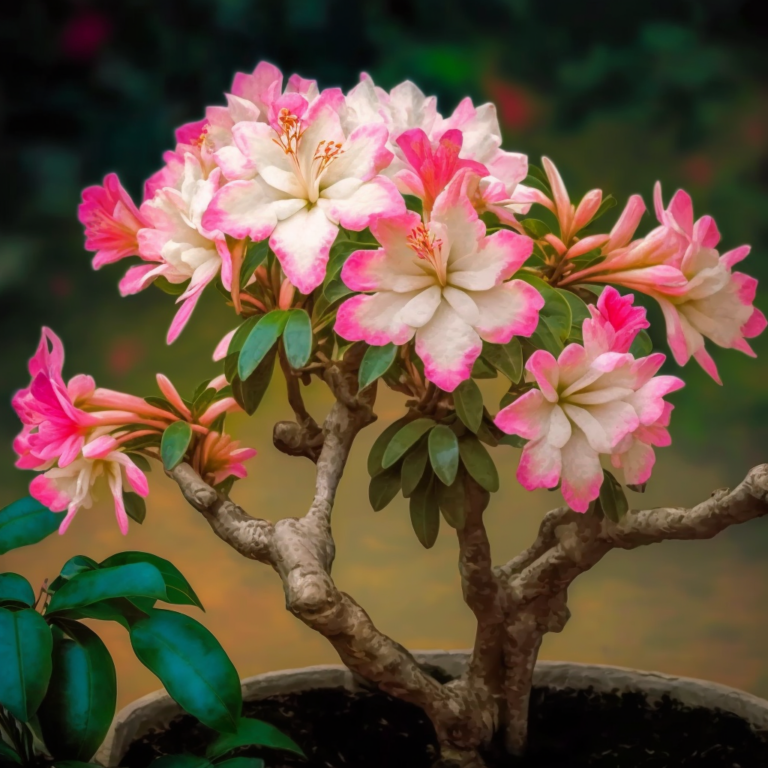Azaleas, belonging to the genus Rhododendron, are flowering shrubs known for their stunning display of colors. They are available in various sizes and bloom in spring, with some varieties also flowering during summer and fall. As a gardener, it’s crucial to understand the specific care requirements of azaleas, with watering being a vital aspect.
Importance of Proper Watering
Proper watering is essential for azaleas as it promotes healthy growth, reduces stress, and prevents diseases. Adequate moisture in the soil ensures the development of a robust root system, enabling the plant to absorb nutrients and withstand harsh conditions.
Factors Influencing Watering Frequency
The frequency of watering azaleas depends on several factors, including:
- Soil type
- Climate and weather conditions
- Plant size and age
- Sunlight exposure
- Season
Considering these factors, azaleas generally require watering once or twice a week, but adjustments should be made based on the specific conditions in your garden.
Signs of Overwatering and Underwatering
It’s essential to recognize the symptoms of overwatering and underwatering to maintain the health of your azaleas:
Overwatering
- Yellowing leaves
- Root rot
- Wilting despite wet soil
- Mold or fungal growth
Underwatering
- Browning leaf edges
- Drooping leaves
- Slow growth
- Flower bud drop
Best Time to Water Azaleas
The ideal time to water azaleas is early morning or late afternoon. Watering during these periods minimizes evaporation and allows the plant to absorb more water. Avoid watering in the midday heat or at night to prevent water waste and reduce the risk of diseases caused by prolonged moisture.
Watering Azaleas in Pots
Container-grown azaleas require more frequent watering than those planted in the ground, as they dry out faster. Check the soil moisture daily, and water when the top 1-2 inches feel dry. Ensure the pot has proper drainage to prevent waterlogging.
Tools You Need to Water Your Azaleas
To properly water your azaleas, you will need a few basic tools. These include:
- A watering can or hose: Depending on the size of your garden and the number of azaleas you have, you can choose between a watering can or hose with a spray nozzle. Opt for a hose if you have more plants to water, as it can be time-consuming to fill and refill a watering can.
- A moisture meter: This will allow you to monitor the moisture levels in the soil and determine when it’s time to water your azaleas. Moisture meters are affordable and easy to use, and they can save you from over-watering or under-watering your plants.
- Mulch: Adding a layer of mulch to the soil around your azaleas can help retain moisture and regulate soil temperature.
- Gloves: It’s important to wear gloves when watering your azaleas to protect your hands from prickly branches and thorns.
- Fertilizer: While not necessary for watering your azaleas, adding a balanced fertilizer can help support healthy growth and vibrant blooms.
Make sure to keep all of your tools clean and stored properly to ensure they last for multiple seasons. By having the right tools on hand, you will be better equipped to keep your azaleas healthy and thriving.
Here’s the section on “Tips to Keep Your Azaleas Hydrated During Summer” for your article:
Tips to Keep Your Azaleas Hydrated During Summer
As the summer months approach, it’s important to make sure your azaleas are properly hydrated. Here are some tips to keep them healthy and happy during the hot and dry season:
- Water your azaleas deeply but infrequently. It’s better to give them a long soak once a week than to water them lightly every day. This helps the roots grow deeper and stronger, making them more resilient to drought.
- Make sure your azaleas are planted in well-draining soil. If the soil is too compacted, the water won’t be able to penetrate properly, and your plants may suffer from root rot.
- Mulch around your azaleas to help retain moisture in the soil. Use a 2-3 inch layer of organic matter such as wood chips or pine needles around the base of the plant. This also helps regulate soil temperature and prevent weed growth.
- Water your azaleas in the morning or evening, when temperatures are cooler and there is less evaporation. Avoid watering in the middle of the day, when the sun is at its strongest.
- Use a soaker hose or drip irrigation system to water your azaleas. This delivers water directly to the base of the plant, minimizing water waste and avoiding wetting the foliage, which can lead to foliar diseases.
- Monitor your azaleas regularly for signs of dehydration, such as wilting leaves and dry soil. If the soil is dry to the touch, it’s time to water. Don’t wait until your plants are in distress before giving them a drink.
- Don’t overwater your azaleas. This can lead to root rot and other fungal diseases. Make sure the soil has good drainage and only water when necessary.
By following these simple tips, you can help your azaleas thrive during the summer and enjoy their beautiful blooms all season long.
Watering Newly Planted Azaleas
Newly planted azaleas need consistent moisture to establish a strong root system. Water them thoroughly immediately after planting, and continue to water every 2-3 days for the first 2-3 weeks. Gradually decrease the frequency to once or twice a week, depending on the weather and soil conditions.

Watering Azaleas in Different Seasons
- Spring: Water azaleas regularly during their blooming period to support healthy growth and vibrant flowers.
- Summer: Increase the watering frequency during hot and dry weather, as azaleas may require more water to combat the heat.
- Fall: Gradually reduce watering as temperatures drop and plants enter dormancy.
- Winter: Water sparingly, only when the ground isn’t frozen and the soil feels dry.
Watering Tips for Azaleas
- Use a soaker hose or drip irrigation system to deliver water directly to the root zone, minimizing evaporation and reducing the risk of diseases.
- Water deeply and less frequently to encourage deep root growth.
- Check the soil moisture before watering to avoid overwatering or underwatering.
Mulching to Retain Moisture
Applying a 2-3 inch layer of organic mulch, such as pine bark or pine needles, around the base of azaleas helps retain moisture, regulate soil temperature, and reduce weed growth. Avoid piling mulch against the trunk to prevent rot and pest infestations.
Rain and Irrigation
Monitor rainfall levels in your area and adjust your watering schedule accordingly. If rainfall is sufficient, you may not need to water your azaleas as frequently. However, during extended dry periods, increase the watering frequency to compensate for the lack of rain.
Drought-Tolerant Azaleas
Some azalea varieties are more drought-tolerant than others, requiring less frequent watering. If you live in an area with limited water resources, consider planting drought-tolerant azaleas, such as the Plumleaf Azalea (Rhododendron prunifolium) or the Pinxterbloom Azalea (Rhododendron periclymenoides).
Water Conservation Techniques
Implementing water conservation techniques can help reduce water usage while maintaining healthy azaleas:
- Use rain barrels to collect and store rainwater for irrigation.
- Choose drought-tolerant azalea varieties.
- Group azaleas with similar water requirements together, allowing for more efficient irrigation.
- Monitor and repair any leaks in your irrigation system to minimize water waste.
Summary
Watering azaleas properly is essential for their health and beauty. The frequency depends on various factors, including soil type, climate, and plant size. Generally, azaleas need watering once or twice a week, but adjustments should be made based on your garden’s specific conditions. Monitor soil moisture, look for signs of overwatering or underwatering, and implement water conservation techniques to ensure your azaleas thrive.
FAQs
How often should I water azaleas?
Azaleas generally require watering once or twice a week, depending on factors such as soil type, weather, and plant size. Monitor the soil moisture and adjust the frequency based on your garden's specific conditions.
What are the signs of overwatering or underwatering azaleas?
Overwatered azaleas may exhibit yellowing leaves, root rot, wilting despite wet soil, and mold or fungal growth. Underwatered azaleas may show browning leaf edges, drooping leaves, slow growth, and flower bud drop.
What is the best time to water azaleas?
The ideal time to water azaleas is early morning or late afternoon, as it minimizes evaporation and allows the plant to absorb more water.
How do I water azaleas in pots?
Check the soil moisture daily, and water container-grown azaleas when the top 1-2 inches of soil feel dry. Ensure the pot has proper drainage to prevent waterlogging.
How can I conserve water while maintaining healthy azaleas?
Implement water conservation techniques such as using rain barrels, planting drought-tolerant azalea varieties, grouping plants with similar water requirements together, and monitoring and repairing irrigation system leaks.

